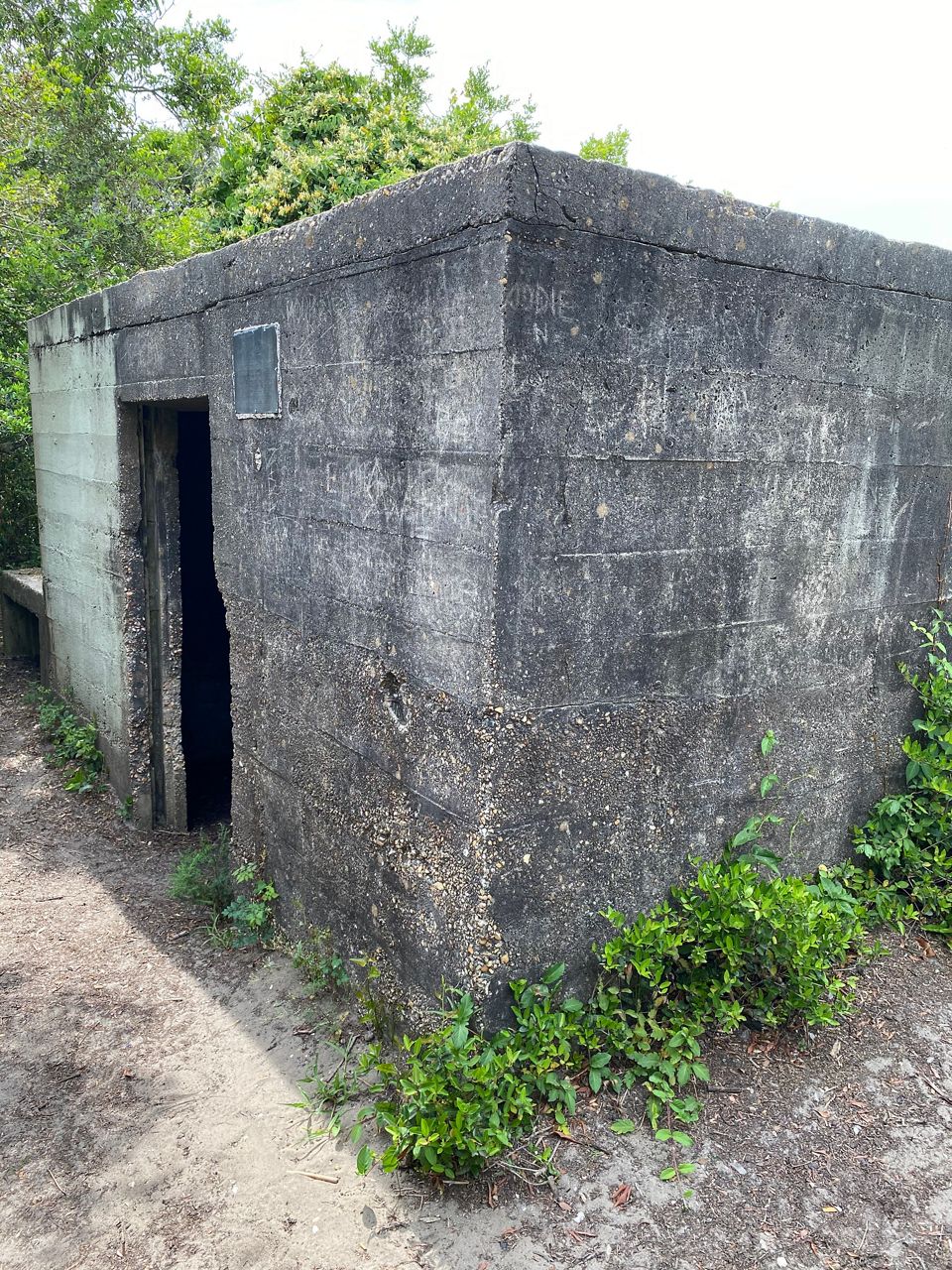FORT FISHER, N.C. — No one has lived in the old World War II bunker at the end of Fort Fisher in nearly 50 years, but people still make the trek out to visit the site because of the man who once called the cement block home.
Robert E. Harrill first visited Fort Fisher with his family. But many years later, after the loss of two of his children and the crumbling of his marriage, he decided to return.
He escaped the mental institution his in-laws had placed him in and he hitchhiked to the coast, determined to make a home.
“I think that the world was eating at him, even back then,” Daniel Norris, a local author, said. “He just got to the point where he needed to be alone.”
When he moved to Fort Fisher, he had no intention of becoming a hermit, but he's remembered saying that seemed to be what the community needed – so he became one.
While Harrill was living in the bunker, it looked a bit like a dump, with odds and ends strewn everywhere. His friends remember that he kept it that way to stop people from stealing from him.
“I remember getting there and I remember his bunker and it wasn't grown up like it is now, lots of space around it, lots of sand and very few trees and bushes,” Norris said. “I do remember his frying pan, where people put money in and I remember he was kind of smelly.”

His way of life was fascinating to the locals and tourists alike and people would go visit him for hours just to listen to his lectures on "common sense."
He once claimed that he attracted more visitors than any other destination in the southeastern part of the state besides the battleship in Wilmington.

“My daddy had gone to see the hermit numerous times and a lot of people would go to see the hermit for advice,” Norris said. “It's weird because when you think of the word 'hermit', you don't think of somebody that wants people to come visit.”
And although the bunker itself doesn't draw the same crowds that the hermit used to, there's still an allure for many people who visit the area. Harrill's life and legendary status keep his memory alive almost half a century later.
Norris was just four years old when he first met the hermit and as it turned out, it would also be the last. But it was enough to kickstart curiosity in Norris that would last his entire life.
He said if you lived in the area, you knew about the Hermit, but there was so much more to Harrill than what the public saw.
Norris often understands where the Hermit was coming from and that perspective inspired him to dig into the hermit's story and write a book on the life and death of the man himself.
“I definitely respect what he did because sometimes, I feel like doing the same thing,” Norris said. “I think everybody has that feeling where they want to get away from it all and it's harder and harder.”
The bunker sits in what is now part of the Fort Fisher Recreation Area and you can take a winding mile hike over the marsh and the beach to visit the place the hermit once called home.
The walk is easy and the views give you a glimpse into what life might have been like for Harrill as he lived off the land for 17 years.
“Things wax and wane in history, but I can't imagine not knowing who he is,” Norris said.










